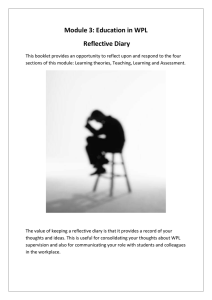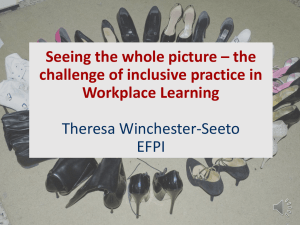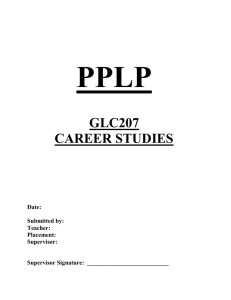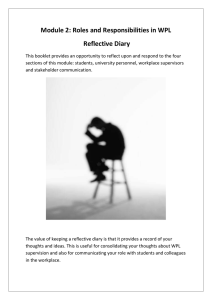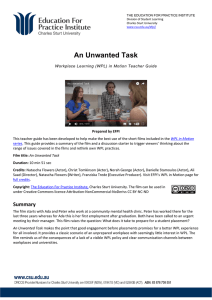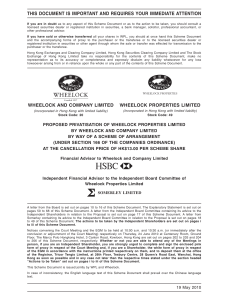from this link
advertisement
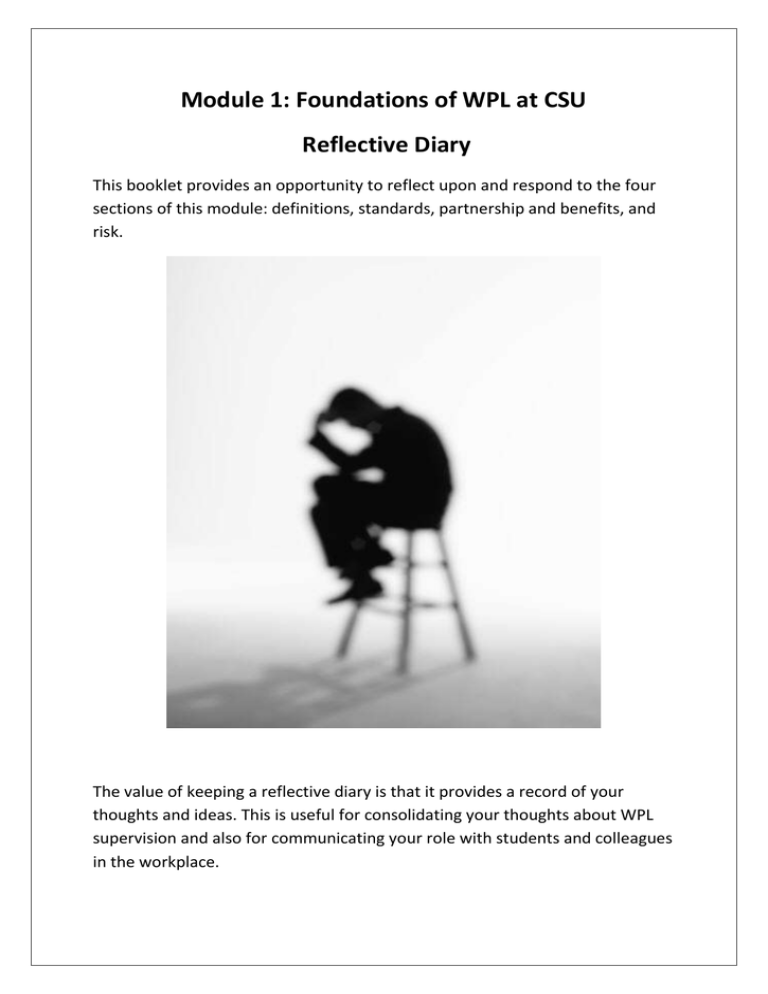
Module 1: Foundations of WPL at CSU Reflective Diary This booklet provides an opportunity to reflect upon and respond to the four sections of this module: definitions, standards, partnership and benefits, and risk. The value of keeping a reflective diary is that it provides a record of your thoughts and ideas. This is useful for consolidating your thoughts about WPL supervision and also for communicating your role with students and colleagues in the workplace. Section 1: Definition a) Workplace Learning should allow students: “to learn through direct implementation of their professional roles in real workplace settings” List three specific activities within your workplace where students can apply their learning. What insights or value do these activities provide students about your profession? b) Every profession/occupation/industry has specific activities, or ‘practices’, which define it. List three of the most important activities, or practices, in your profession. Describe how workplace learning can enable students to learn about these practices. c) As emerging professionals, students gain their understanding of practice in a variety of formal and informal ways. From your own background, describe a key learning experience which impacted strongly upon how you approach professional practice. List two important features of professional practice that you would you like students to learn about while on placement. Section 2: EFPI Standards a) A key feature of work placements is that they develop knowledge of the profession/occupation. List the ‘real interactions’ with: practice communities, clients, and/or local communities that your workplace can offer students. Describe the ways in which these ‘real interactions’ develop students’ knowledge of the profession/occupation. b) Developing your position as a role-model and supervisor for WPL students is vital to enhancing their learning experience. Identify three things you would like to know about students learning/preparation prior to being on work placement. Obtain this information from your university contact. Write down the names of colleagues in your workplace who you can share your knowledge and experience of supervision with. Discuss tips and ideas about how you each approach WPL supervision. Make a list of formal internal and external staff development initiatives you can engage with. Section 3: Partnership and Benefits a) WPL is a ‘partnership’ between the student, organisation and the university. Describe what the word ‘partnership’ means to you in the context of the statement above. List three ways you might modify your role as a supervisor to foster this ‘partnership’ approach? b) Designed effectively, workplace learning can benefit both the organisation and students. Describe two main ways you believe WPL benefits your organisation. i) ii) List three specific benefits you view students gain from workplace learning in your organisation. i) ii) ii) Section 4: Risk a) Communicating safety procedures and managing risk is an important aspect of workplace learning. List three risks in your workplace that should be communicated clearly to WPL students. Imagine you are describing these risks to students; summarise the relevant safety procedures which they need to be aware of. b) WPL supervision requires balancing student learning, client services priorities and appropriate levels of student supervision. Which of the above aspects take most of your time and attention during WPL supervision? What influences this imbalance? List three ways you could modify your practice to ensure a more even focus, or balance, between each of the three areas.
